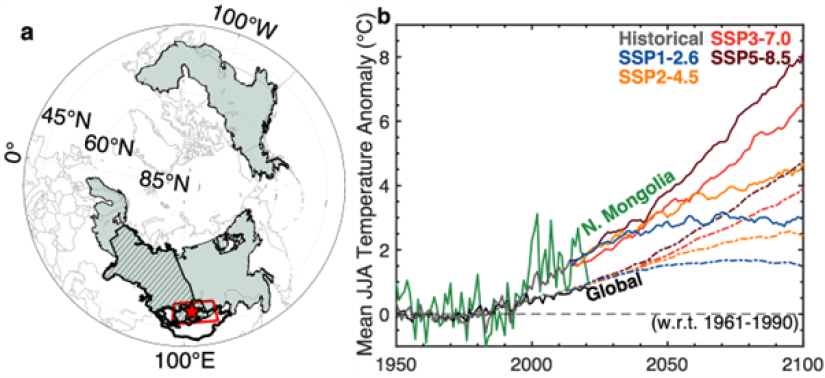Research on Forest Ecosystem of NUM Published on “NATURE” Magazine
Society
Ulaanbaatar, July 25, 2023 /MONTSAME/. The research titled
“Approaching a thermal tipping point in the Eurasian boreal forest at its
southern margin”, which was conducted by the Laboratory of Forest Ecosystem
Monitoring of the National University of Mongolia (NUM), was published in the “NATURE” Communications
Earth & Environment” magazine on July 10.
This research examined how extreme
temperatures caused by climate change affect the photosynthesis of woody
plants.
The boreal regions in the
northern hemisphere have warmed considerably faster than the global average.
The average temperatures in North Mongolia have warmed approximately three
times the global average over the past few decades (2001–2021 relative to
1961–1990) and are expected to continue to warm more rapidly than the globe
under a range of low to high emission scenarios.

Extreme heat can cause permanent damage to a
plant’s photosynthetic apparatus and can reduce carbon assimilation by forests.
The research was conducted on 5 species: Siberian larch (Larix sibirica), which
is the main component of the forest reserve in Mongolia, silver birch (Betula
platyphylla), Siberian elm (Ulmus pumila), Eurasian aspen (Populus
terumoiledes) and willow (Salix spp). According to the researchers, a special emphasizes was put on Larix sibirica since it is a
foundation tree species across boreal Eurasia accounting for a third of the
biome’s total biomass, and 80% of all Mongolian forest biomass.
Summarizing the results, it was showed that extreme heat up to 37-48°C,
lasting 2-3 days in summer, will threaten the biome’s continued ability to
assimilate and sequester carbon. A
decreased boreal forest carbon sink and release of current carbon stocks
following large scale forest mortality can potentially contribute to a
‘positive climate feedback’ and exacerbate ongoing warming.
Moreover, the research highlighted that under high emission trajectories
we may approach an abrupt ecological tipping point in southern boreal Eurasian
forests substantially sooner than we think.
Related news



 Ulaanbaatar
Ulaanbaatar










































































